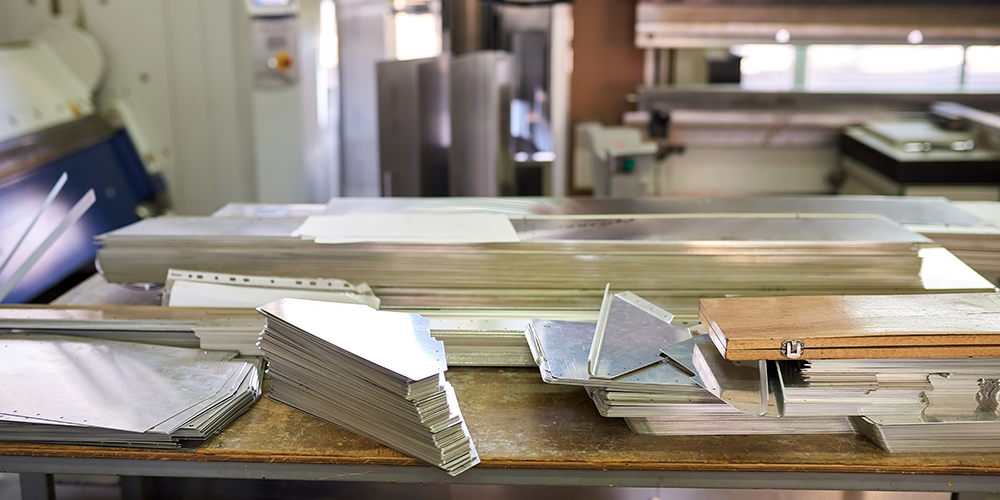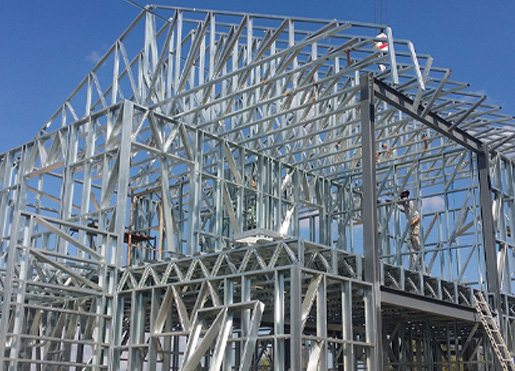 Our Blogs
Our Blogs
Sheet Metal Forming Process: What It Is and How It Works
When it comes to manufacturing, the sheet metal forming process is one of the most commonly used techniques for shaping and creating metal components. From car bodies to kitchen appliances, sheet metal forming plays a crucial role in producing durable and precise parts. But what exactly is sheet metal forming, and how does it work? In this blog, we’ll dive deep into the sheet metal forming process, its types, and applications in various industries.
In this blog, we will explore the different types of metal fabrication work, the methods employed, and the materials commonly used in metal manufacturing. By the end of this article, you'll have a clear understanding of what metal fabrication is, how it works, and why it is vital to the modern manufacturing world.

What Is Sheet Metal Forming?
Before we delve into the details, let's answer the fundamental question: What is sheet metal forming? Sheet metal forming is a process used to shape or cut metal sheets into desired forms without losing the metal’s volume. This is done by applying force to the metal, either through a press or other mechanical methods. The metal is typically shaped at room temperature, although certain processes may involve heating the metal to improve its malleability.
Before we delve into the details, let's answer the fundamental question: What is sheet metal forming? Sheet metal forming is a process used to shape or cut metal sheets into desired forms without losing the metal’s volume. This is done by applying force to the metal, either through a press or other mechanical methods. The metal is typically shaped at room temperature, although certain processes may involve heating the metal to improve its malleability.
Key Metal Forming Processes
There are several metal forming processes used in the industry today, each suited for specific applications. Let’s look at some of the most common types of sheet metal forming:
- Bending: Bending is one of the most common metal forming processes. It involves applying a force to the sheet metal to create an angular shape. The metal is bent along a straight axis, and the angle of the bend depends on the amount of force applied. Bending is typically done using a press brake machine, which uses a die to bend the metal sheet.
- Stamping: Stamping is a high-volume sheet metal forming process that uses a die and press to cut, shape, or form a sheet of metal. The sheet is placed between the die and press, and a mechanical force is applied to shape the metal into the desired form. This process is commonly used for making car parts, coins, and household items.
- Deep Drawing: Deep drawing is a process used to form a sheet of metal into a three-dimensional shape, such as a cup or a can. In this process, a flat sheet of metal is placed over a die, and a punch is used to push the metal into the die, creating a deep shape. Deep drawing is used in the manufacturing of products like beverage cans, cookware, and automotive parts.
- Stretch Forming: Stretch forming is a process where a sheet of metal is stretched over a form to achieve a desired shape. This process is commonly used for creating large, complex shapes, such as aircraft wings or metal panels for architectural applications. The metal is heated to improve its flexibility, and then it is stretched over the mold.
- Roll Forming: Roll forming is a continuous metal forming process that shapes metal sheets as they pass through a series of rollers. This process is ideal for producing long, continuous sections of metal with a consistent cross-section. Roll forming is commonly used in the production of metal roofing, gutters, and metal doors.
- Shearing: Shearing is a process where a pair of blades is used to cut the sheet metal into desired shapes or sizes. Unlike other metal forming processes that involve shaping the metal, shearing focuses on cutting the metal into flat pieces. This process is commonly used in the initial stages of production before other sheet metal forming processes are applied.
How Does Sheet Metal Forming Work?
The process of sheet metal forming typically begins with selecting the right type of metal sheet. The thickness, hardness, and material properties of the metal determine which metal forming process will be most effective. Once the metal is selected, the following steps are typically involved:
- Cutting the Metal: In many cases, the metal sheet is cut into the desired shape or size using processes like shearing or laser cutting. The dimensions of the metal sheet are important for ensuring precision in the final product.
- Heating the Metal (Optional): In some sheet metal forming processes, such as deep drawing or stretch forming, the metal may be heated to make it more pliable. Heating reduces the risk of cracking or breaking during the forming process.
- Forming the Metal: The next step involves using a press, die, or rollers to apply the necessary force to shape the metal. Depending on the type of metal forming process used, the metal may be bent, drawn, stretched, or stamped into the desired shape.
- Finishing: After the metal has been formed, it may undergo additional finishing processes such as trimming, grinding, or polishing to remove excess material and achieve the final desired shape and surface finish.
- Inspection and Quality Control: Once the sheet metal forming process is complete, the final product is inspected for defects and to ensure it meets the required specifications. This may involve visual inspection, dimensional checks, or testing for strength and durability.
Applications of Sheet Metal Forming
The versatility of the sheet metal forming process makes it suitable for a wide range of applications. Some common industries where metal forming processes are used include:
- Automotive Industry: Sheet metal forming is used extensively in the automotive industry to create components such as car doors, body panels, and chassis. The process allows manufacturers to produce lightweight, strong, and durable parts that meet safety and performance standards.
- Aerospace: In the aerospace industry, sheet metal forming is used to create lightweight components for aircraft and spacecraft. The process is used to form parts such as fuselages, wings, and engine components, which need to be both strong and lightweight.
- Construction: Sheet metal forming is also used in the construction industry for applications like roofing, gutters, and siding. The process allows for the creation of durable and weather-resistant components that can withstand harsh environmental conditions.
- Electronics: The electronics industry uses sheet metal forming for products like enclosures, housings, and heat sinks. The precision of the process ensures that the components fit together seamlessly and protect the sensitive electronic parts inside.
- Consumer Goods: Many consumer goods, such as kitchen appliances, furniture, and tools, are made using sheet metal forming. The process allows manufacturers to produce high-quality products at a cost-effective rate.
Advantages of Sheet Metal Forming
The versatility of the sheet metal forming process makes it suitable for a wide range of applications. Some common industries where metal forming processes are used include:
- High Precision: One of the main benefits of the sheet metal forming process is its ability to produce parts with high precision and accuracy. The use of dies and presses ensures consistent quality in large production runs.
- Cost-Effective: Sheet metal forming is a relatively low-cost manufacturing method, especially for high-volume production. The cost per part decreases as the quantity of parts increases, making it ideal for mass production.
- Versatility: The wide range of metal forming processes allows manufacturers to create parts with complex shapes, sizes, and materials. This makes it suitable for a variety of industries and applications.
- Durability: The products created through sheet metal forming are generally strong and durable, making them suitable for use in demanding environments.
Conclusion
The sheet metal forming process is a vital part of modern manufacturing. Whether it’s bending, stamping, deep drawing, or rolling, these metal forming processes allow manufacturers to create durable, high-precision components for various industries. Understanding how sheet metal forming works can help manufacturers choose the best method for producing their desired parts, ensuring both efficiency and quality.
If you're looking for more information about the sheet metal forming process or need expert guidance on your metal fabrication projects, don't hesitate to reach out to professionals who specialize in these processes.





Top Comments
No Comments Yet For This Post
Post Your Comment Here
Your email address will not be published. Required fields are marked *